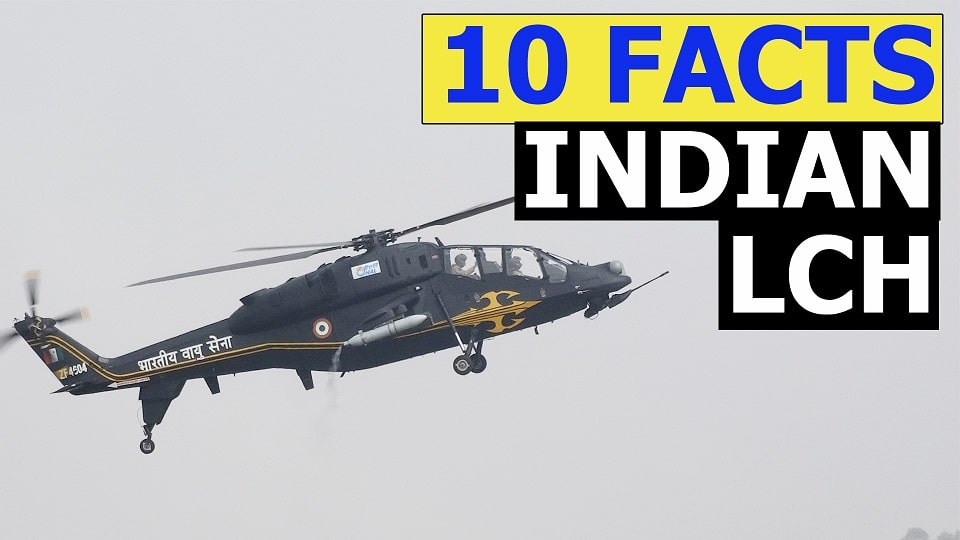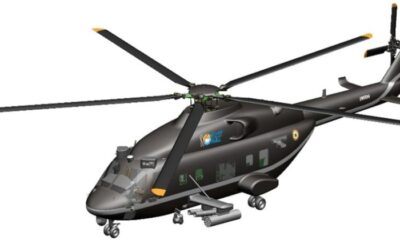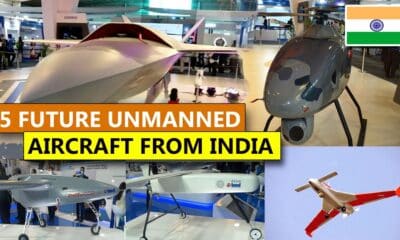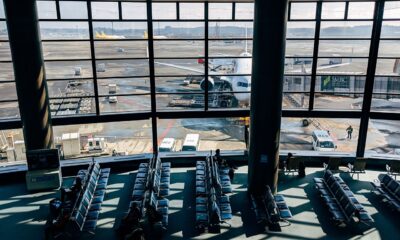Aerospace
10 facts about the Light Combat Helicopter (LCH) made by Indian HAL.
India is making significant progress in the development of defense products, and HAL is a key element of these amazing creations

India is making significant progress in the development of defense products, and HAL is a key element of these amazing creations. Like the Light Combat Helicopter, it is an Indian-built helicopter that has broken numerous performance records. It is currently debuting in Indian Defense work. Let’s explore a few fascinating facts about this airplane.
No 1, When did the LCH program begin?
The Attack helicopter, which had to be employed for high-altitude capable combat fighter helicopters, was the weakness of the Indian defense during the Kargil conflict. HAL made an announcement about a program to develop the Light Combat Helicopter in 2006. The HAL anticipated having operating units by December 2023, however, there were a number of delays, some of which were blamed on the suppliers.
Meet the Bell 360, the latest rival to the Sikorsky Raider X.(Opens in a new browser tab)
No 2, How does LCH compare to other helicopters?
The Light Combat Helicopter (LCH) was suggested to meet the IAF’s need for a specific light helicopter for combat operations. The most possible similarity exists between LCH and ALH. LCH has a compact fuselage, a tandem configuration with a pilot and co-pilot/gunner, and a number of other features.
No 3, How many orders have LCH already received?
The helicopter can carry out combat operations both during the day and at night. The LCH has a tandem cockpit that can accommodate two crew members and is furnished with modern weapon systems, electronic warfare equipment, and helmet-mounted targeting devices. 65 and 114 helicopters, respectively, have reportedly been ordered by the Army and the Air Force.
IAF to induct first batch of domestically built LCH at Jodhpur (Opens in a new browser tab)
No 4, What type of engine powers LCH?
Two Turbomeca Shakti turboshaft engines, each producing 1,430 horsepower, power the LCH’s four-blade main rotor and four-blade tail rotor. In fact, French Turbomeca and HAL are working together to create the Shakti engine, which has already been evaluated for performance in high-altitude operations.
No 5, The Apache Helicopter and LCH are contrasted.
The LCH, however, outperforms the Apache in one area: range. It has a maximum altitude of 6,500 meters and it has 550 km. Despite having a range of only 480 kilometers, the Apache can fly at a maximum height of 6,400 meters.
Things to know about china’s Newly built AC352 helicopter.(Opens in a new browser tab)
No 6, How did HAL create a combat helicopter like LCH?
The Dhruv Advanced Light Helicopter, created and produced by HAL, is India’s most sophisticated indigenous helicopter. Due to the attack capability of a variation known as Rudra, Dhruv has been employed for a variety of duties, including SAR, Evac, and RTR operations. It has already been implemented in the Indian Air Force, Navy, and Army. Through pipelines, it is also exported to other countries. Using the knowledge gained from developing the Dhruve helicopter, HAL constructed the LCH using both its avionics and componentry.
No 7, What are the LCH helicopter’s speed and characteristics of it?
Its top speed is 268 km/h, and it never goes faster than 330 km/h. Its endurance is 3 hours and 10 minutes, and its range is 550 km. It climbs at a pace of 12 m/s. Additionally, this aircraft is 51 feet in length, 15 feet in wingspan, and 15.5 feet in height.
Its main rotor diameter is 43.4 feet, and its primary weight is 2,250 kg when empty. Its maximum takeoff weight is 5800 kg, and its payload is 1,750 kg.
No 8, What weapons does LCH possess?
Its armament consists of a single 20 mm M621 gun mounted in the forward turret. It can carry four 12 FZ 275 LGR rockets on its four external hardpoints. Both Air to Air and Anti Tank guided missiles can be carried by it. It is capable of transporting Grenade launchers, unguided bombs, and Cluster Munition.
For increased survival, armor protection, night assault capability, and crash-worthy landing gear are all recommended. Its body is made of a crash-proof material, while the cockpit is made of glass for improved vision. It has a tail rotor without a bearing and the main motor without hinges.
No 9, How much does it cost to buy an LCH helicopter for Defence?
As of now for the latest order helicopter’s stated price is around Rs 259 crores which is around $31.8 million per unit at the current product price. Indian defense has ordered 15 helicopters that are costed of 3,887 crores Indian rupees.
No 10, What kind of helicopter is in opposition to the LCH?
When it comes to capabilities, this helicopter is compared to the Chinese Z-10, Turkish T-129 Attack Helicopters, and Airbus Tiger combat helicopter. However, each helicopter has its own distinctive qualities that set it apart from the competition.

Aerospace
India is set to build a central command for the Air Traffic Control system, called ISHAN

India’s air traffic growth has led to increased responsibilities for air traffic control. The Airports Authority of India (AAI) is considering centralizing air traffic control for aircraft, dividing the country into four regions. The goal is to consolidate India’s segmented airspace into a single entity to improve air traffic management (ATM) efficiency, safety, and smoothness.
Recently, the AAI invited expressions of interest to develop a detailed project report for the Indian Single Sky Harmonized Air Traffic Management (ISHAN) initiative in Nagpur. Under this plan, air traffic controllers in Nagpur would handle domestic flights flying above 25,000 feet, eliminating the need for coordination among controllers in different regions.
For domestic regional flights operating above 25,000 feet, control would shift to the central command in Nagpur. This consolidation aims to enhance airline operations, increase flight handling capacity, and reduce congestion and flight times for passengers.
Currently, the AAI provides ATM services over Indian airspace and adjoining oceanic areas, covering over 2.8 million square nautical miles. This airspace is divided into four flight information regions (FIRs) in Delhi, Mumbai, Kolkata, and Chennai, along with a sub-FIR in Guwahati.
FIRs are responsible for providing air traffic services, including weather information, visibility, and search and rescue assistance. The proposed unification under the ISHAN initiative aligns with the projected growth of the aviation industry, which anticipates a doubling of domestic passenger traffic by 2030.
Aerospace
Does AirAsia show interest in Comac aircraft in the future?

Tony Fernandes, CEO of Capital A, operating as AirAsia Group, recently paid a visit to the facilities of COMAC on April 2, 2024, and was thoroughly impressed by what he witnessed.
C919 already securing nearly 1000 orders
COMAC, known for its homegrown aircraft, has launched two promising jets: the ARJ21 and the C919 aircraft. Both aircraft are gaining popularity in the Chinese market, with the C919 already securing nearly 1000 orders from various airlines.
Fernandes expressed his admiration for COMAC’s achievements in aircraft manufacturing, acknowledging the immense challenge it entails. His visit underscored the realization that AirAsia now has a viable third option when it comes to selecting aircraft for its fleet.
During his tour, Fernandes was delighted by the innovation and technology evident in COMAC’s aircraft production and the company’s commitment to long-term partnerships.
He noted that many Western companies have shifted away from prioritizing loyalty and customer service, opting instead for short-term gains and a narrow definition of success.
Last month, COMAC embarked on an international tour, showcasing demonstration flights to neighboring countries, particularly Indonesia and Malaysia. Fernandes believes that the positive impression left by COMAC during his visit opens up new opportunities for collaboration.
Fernandes emphasized COMAC’s remarkable achievements
The shared values of loyalty, customer service, and long-term vision align closely with AirAsia’s ethos, making collaboration with COMAC appealing. With a focus on innovation and excellence, both companies stand to benefit from a partnership grounded in trust and a shared commitment to success.
Indonesia and China have already collaborated in validating and maintaining the airworthiness of the ARJ21 aircraft, indicating a solid foundation for future partnerships.
In his statement, Fernandes emphasized COMAC’s remarkable achievements and genuine desire for long-term partnership, highlighting the absence of ego and a genuine willingness to succeed together. He marveled at COMAC’s fully automated, AI-driven factory, a testament to their dedication to innovation and efficiency.
Fernandes criticized Western firms for prioritizing short-term gains over loyalty, customer service, and long-term strategy, emphasizing the importance of understanding customers’ needs and collaborating to achieve success.
Aerospace
Indigo will soon launch Air Taxi Service in India

InterGlobe Enterprises, the parent brand of IndiGo, is set to revolutionize travel in India with its upcoming air taxi service.
Scheduled for a potential launch in 2026, this innovative venture promises a seamless journey for passengers between two bustling hubs. Delhi and Gurgaon in Haryana. The forthcoming service is projected to revolutionize the daily commute, offering passengers a swift aerial journey covering the distance in a mere 7 minutes.
This remarkable efficiency contrasts starkly with the conventional 90-minute drive, underscoring the immense time-saving potential for commuters. The anticipated fare, ranging from Rs 2,000-3,000, makes this innovative mode of transport not only swift but also remarkably competitive in pricing.
At the heart of this ambitious endeavor lies a strategic partnership with Archer Aviation, a pioneer in electric vertical takeoff and landing (eVTOL) aircraft technology. Under this collaboration, Archer will supply 200 state-of-the-art eVTOL aircraft, representing an investment of US$ 1 billion. These cutting-edge aircraft, capable of accommodating up to four passengers alongside the pilot, epitomize the future of sustainable air travel.
Powered by six battery packs, Archer’s eVTOL aircraft boast rapid charging capabilities, enabling a swift turnaround between flights. With a charging time of just 30-40 minutes, these eco-friendly aircraft ensure minimal downtime, maximizing operational efficiency.
Similar services are anticipated to be introduced by the joint venture in Bengaluru and Mumbai as well. Nevertheless, the service rollout period has not yet been made public by the company. Next year, it is anticipated to get its certification. Following this, the company will start the certification procedure with the Directorate General of Civil Aviation (DGCA).





























